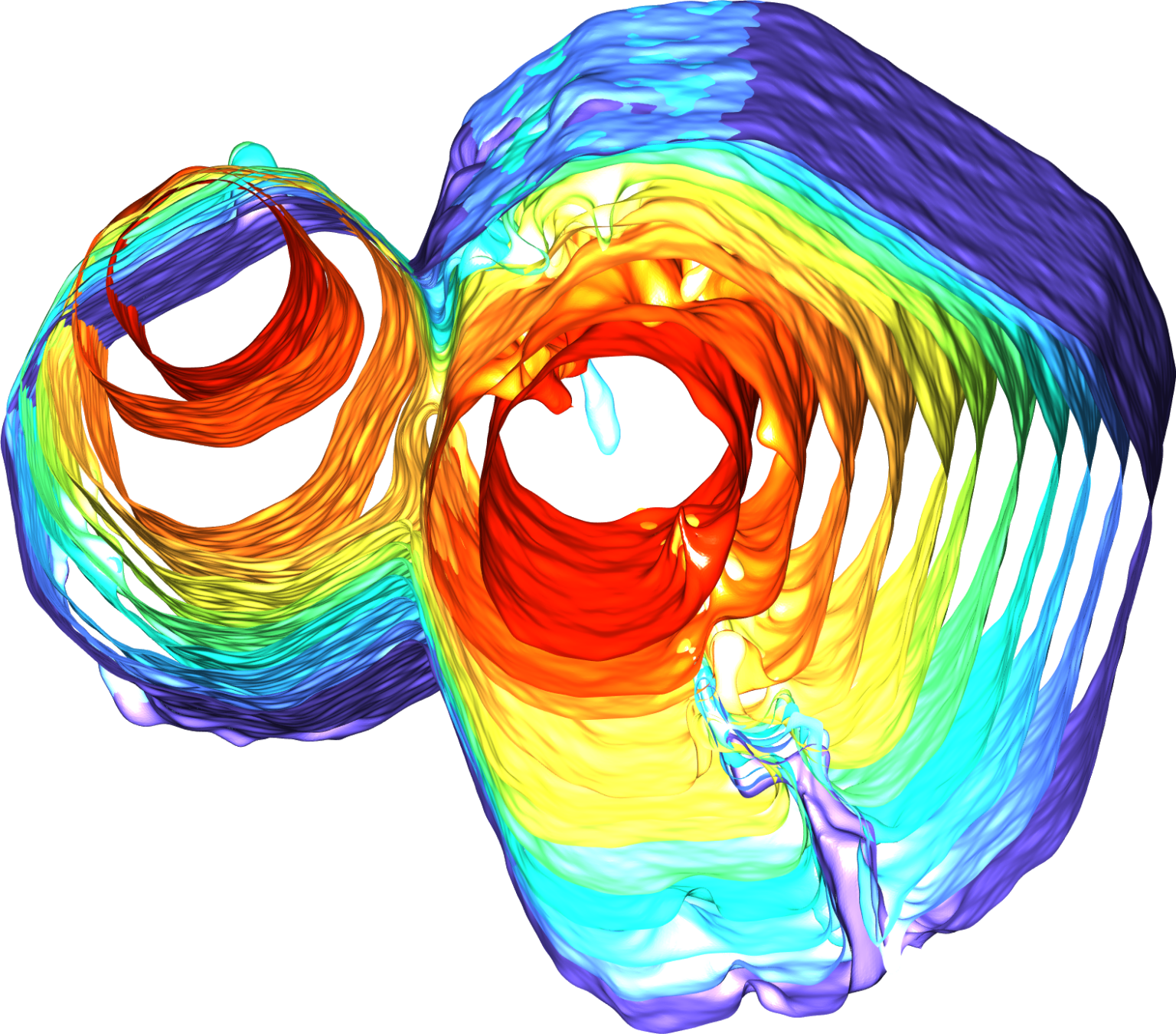A research team led by the University of Michigan has confirmed the possibility of the commercial resurrection of quasicrystals. It is to be noted that these materials were once considered to have the potential to revolutionize everything from solar cells to frying pans, but lost their fame in the early 2000s.
 An X-ray tomography visualization shows a top-down view of two quasicrystals as they start to meld together during cooling. Image Credit: Shahani Group, University of Michigan.
An X-ray tomography visualization shows a top-down view of two quasicrystals as they start to meld together during cooling. Image Credit: Shahani Group, University of Michigan.
The study was published in the journal Nature Communications and proposes an approach to make much larger quasicrystals, without the defects that affected the previous manufacturers and eventually led them to be neglected as an intellectual curiosity.
One reason why industry gave up on quasicrystals is because they’re full of defects. But we’re hoping to bring quasicrystals back into the mainstream. And this work hints that it can be done.
Ashwin Shahani, Study Corresponding Author and Assistant Professor, Materials Science and Engineering and Chemical Engineering, University of Michigan
Quasicrystals exhibit organized structure but do have repeating patterns of ordinary crystals. They can be manufactured with several attractive characteristics. They can either be ultra-hard or super slippery. These materials have the ability to absorb heat and light in strange ways and express exotic electrical characteristics, among a set of other capabilities.
However, the earlier manufacturers who attempted commercialization of the material faced an issue, where the crystals developed tiny cracks that made the quasicrystals susceptible to failure. These cracks are called grain boundaries and lead to corrosion. Hence, the commercialization of quasicrystals hit a roadblock.
New outcomes from the research reveal that, under specific conditions, small quasicrystals can collide and meld together, leading to the formation of a large crystal, with no grain boundary imperfections observed in groups of smaller crystals. Shahani said that the phenomenon was a surprise discovery during the experiment meant to observe the formation of the material.
It looks like the crystals are healing themselves after collision, transforming one type of defect into another type that eventually disappears altogether. It’s extraordinary, given that quasicrystals lack periodicity.
Ashwin Shahani, Study Corresponding Author, Assistant Professor, Materials Science and Engineering and Chemical Engineering, University of Michigan
The initial stage of the crystal looks like pencil-like solids measuring a fraction of a millimeter, which is suspended in a molten mixture of cobalt, aluminum and nickel. This could be observed by the team instantly in 3D using X-ray tomography. The tiny crystals tend to collide with each other and meld together as the temperature of the mixture lowers, leading to the morphing of a single large quasicrystal that is multiple times larger than the constituent quasicrystals.
The team observed the process at Argonne National Laboratory and mimicked it virtually with computer simulations. By processing each simulation under somewhat variable conditions, the researchers were able to identify the precise conditions responsible for the meld of tiny crystals into larger ones.
As an example for the observation, the researchers found that the tiny pencil-like crystals must face each other within a certain range of alignment to collide and coalesce. The simulation was done in the laboratory of Sharon Glotzer, the John Werner Cahn Distinguished University Professor of Engineering and a corresponding author on the paper.
It’s exciting when both experiments and simulations can observe the same phenomena happening on the same length and time scales. Simulations can see details of the crystallization process that experiments can’t quite see, and vice versa, so that only together can we fully understand what’s happening.
Sharon Glotzer, Study Corresponding Author and John Werner Cahn Distinguished University Professor of Engineering, University of Michigan
Even though it would take more time to commercialize the technology, the simulation data could finally prove useful in forming an approach to produce large quasicrystals, efficiently, in production-scale quantities.
Shahani expects the usage of sintering, a familiar industrial process where materials are melded together using heat and pressure. According to Shahani, although being a challenging objective, the new study shows opportunities for research to make them possible.
Currently, Shahani and Glotzer have joined hands to learn more about quasicrystal defects, including the process by which they form, move and evolve.
The research team also involved researchers from Brookhaven National Laboratory. The study was supported by the U.S. Department of Energy, Office of Science, Office of Basic Energy Science.
Glotzer is also the Anthony C. Lembke Department Chair of Chemical Engineering, Stuart W. Churchill Collegiate Professor of Chemical Engineering, and a professor of materials science and engineering and macromolecular science and engineering.
Journal Reference:
Han, I., et al. (2021) Formation of a single quasicrystal upon collision of multiple grains. Nature Communications. doi.org/10.1038/s41467-021-26070-9.